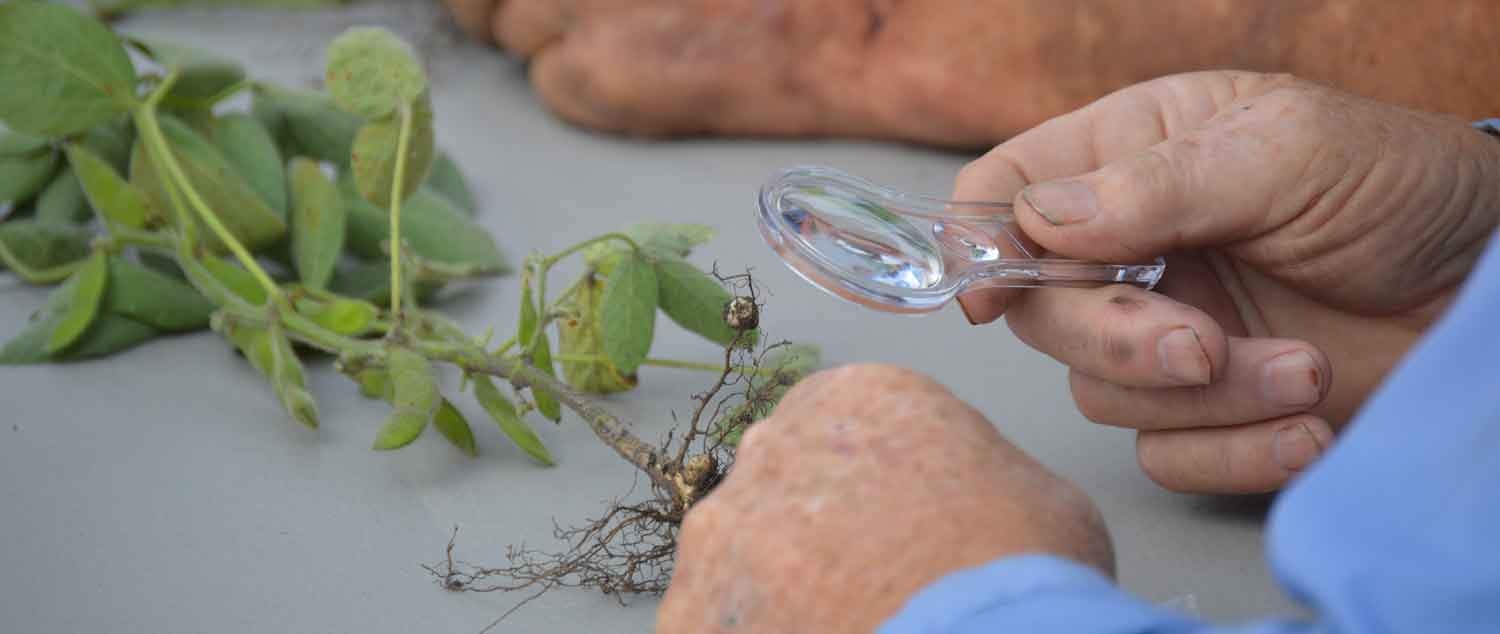Field day educates growers about IDC and SCN management
Field day educates growers about IDC and SCN management

When there’s an issue with your soybeans above ground, sometimes it’s much more effective to look below ground to find the “root” of the problem. That was the key message during the University of Minnesota’s (U of M) Soybean SCN/IDC Field Day held at Corey Hanson’s farm in Norman County on Aug. 28. Hanson, the District 1, 2 & 3 director for the Minnesota Soybean Research & Promotion Council (MSR&PC), has a plot trial on his farm funded by MSR&PC exploring different methods to manage soybean cyst nematode (SCN) and iron deficiency chlorosis (IDC).
The field day, however, focused less on the progress of the plot and more on how growers can better manage SCN and IDC and what causes it. On hand at the field day were UMN’s Angie Peltier and Lindsay Pease. Pease, an extension specialist in nutrient and water management, provided information on how better drainage can improve IDC issues by reducing the salt buildup that can cause the issue. Research from UMN has shown that the severity of IDC increases for soybeans growing on waterlogged soils, especially when soils are cold.
“Tile drainage helps lower that water table, dissolving some salts and helping move the rest of the salt downwards,” Pease said. “It’s an expensive solution but can pay off long-term and increase soybean yields enough over time to make it worth it.”
On the topic of SCN, Peltier, a crops extension specialist, preached to producers that just because you don’t see it in your fields, doesn’t mean you don’t have it, and if you do see it then it’s going to be much more difficult to manage. To help with detection, participants at the field day were all given free soil sample kits to test for SNC in their own fields courtesy of the soybean checkoff.
“SCN is very difficult to spot even below the soil, so we strongly recommend farmers get their fields tested,” Peltier said. “It’s important information to have for first detection, but also if you have SCN its important to continue to sample to see how your management is working.”
Hanson first discovered SCN, which travels from field to field typically through farm equipment or via wind erosion, on his field nearly two decades ago. He says farmers don’t always look to SCN as a source for their problems because they don’t have any clue that it’s there.
“Probably the biggest frustration I have in this area is producers saying ‘my beans aren’t yielding, I’m going to quit planting them’ and they don’t realize there are other things going on besides what they see above ground,” Hanson said. “Sometimes you have to dig a little deeper.”
According to UMN, SCN is best managed by planting resistant soybean varieties and by rotating with non-host crops such as corn and wheat.



